Advertisements
Advertisements
प्रश्न
In the given figure ΔABC and ΔAMP are right angled at B and M respectively. Given AC = 10 cm, AP = 15 cm and PM = 12 cm.
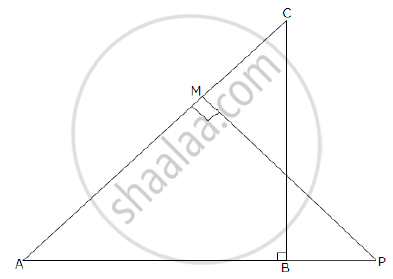
1) Prove ΔABC ~ ΔAMP
2) Find AB and BC.
उत्तर
In ABC and AMP
∠ABC = ∠AMP (each 90°)
∠BAC = ∠PAM (common)
∴ΔABC ~ ΔAMP (By AA similarity)
Since the triangles are similar, we have
`(AB)/(AM) = (BC)/(MP) = (AC)/(AP)`
`=> (AB)/(AM) = (BC)/(MP) = (AC)/(AP)`
`=> (AB)/(AM) = (BC)/12 = 10/15`
Taking `(BC)/12 = 10/15 => BC = (12 xx 10)/15` = 8 cm
Now, using Pythagoras theorem in ΔABC
`(AB)^2 + (BC)^2 = (AC)^2`
`=> (AB)^2 = 10^2 - 8^2 = 36`
=> AB = 6 cm
Hence AB = 6 cm and BC = 8 cm
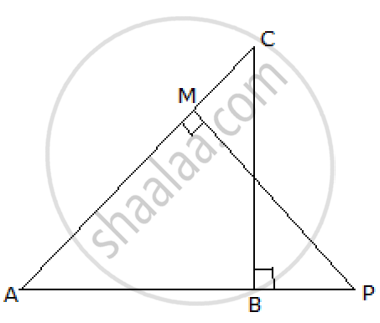
APPEARS IN
संबंधित प्रश्न
In the following figure, in Δ PQR, seg RS is the bisector of ∠PRQ.
PS = 3, SQ = 9, PR = 18. Find QR.
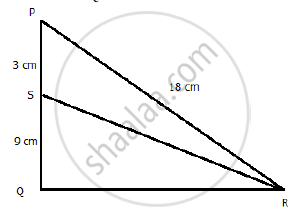
In the figure given below, Ray PT is bisector of ∠QPR. If PQ = 5.6 cm, QT = 4 cm and TR = 5 cm, find the value of x .
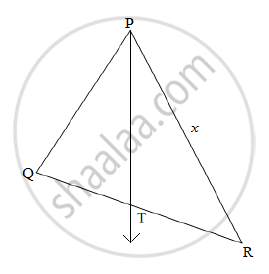
In figure, ∠CAB = 90º and AD ⊥ BC. If AC = 75 cm, AB = 1 m and BD = 1.25 m, find AD.
Prove that, in a right triangle, the square on the hypotenuse is equal to the sum of the squares on the other two sides.
In the given figure, AB and DE are perpendicular to BC.
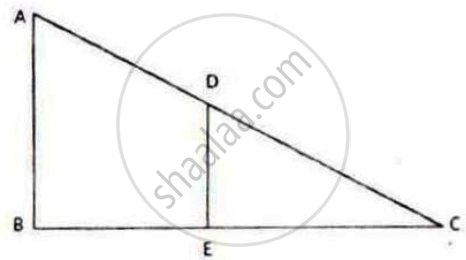
1) Prove that ΔABC ∼ ΔDEC
2) If AB = 6 cm; DE = 4 cm and AC = 15 cm. Calculate CD.
3) Find the ratio of area of ΔABC: area of ΔDEC
In Δ ABC, D and E are points on the sides AB and AC respectively. If AD= 4cm, DB=4.Scm, AE=6.4cm and EC=7.2cm, find if DE is parallel to BC or not.
If ΔABC ~ ΔPQR and ∠A = 60°, then ∠P = ?
A model of an aeroplane is made to a scale of 1 : 400. Calculate : the length, in cm, of the model; if the length of the aeroplane is 40 m.
In figure, PQ is parallel to BC, AP : AB = 2 : 7. If QC = 0 and BC = 21,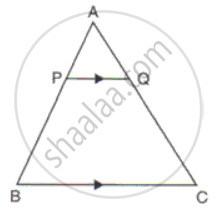
Find
(i) AQ
(ii) PQ
In the figure, which of the following statements is true?
